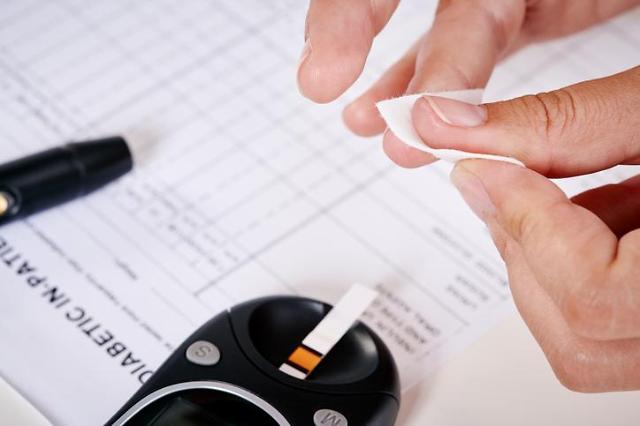
[Gettyimages Bank]
While conventional methods have required people with diabetes to prick their finger to extract blood drops, non-invasive alternatives minimize the pain and discomfort of patients. Raman spectroscopy is a non-destructive chemical analysis technique, based upon the interaction of light with chemical bonds within a material.
Previous studies using Raman spectroscopy have raised questions regarding the effectiveness and accuracy of using Raman spectroscopy due to a lack of direct evidence for glucose sensing. Raman is a light scattering technique, whereby a molecule scatters incident light from a high intensity laser light source.
In collaboration with MIT researchers, the Samsung Advanced Institute of Technology (SAIT) has developed an "off-axis" Raman spectroscopy system that enables the direct observation of glucose Raman peaks from in vivo skin. Their findings were published in Science Advances, a peer-reviewed scientific journal.
Utilizing this system, they demonstrated one of the highest prediction accuracies among non-invasive technologies. The research team also developed an innovative technique for reducing the effects of movement artifacts on glucose sensing in Raman spectroscopy.
"Non-invasive blood glucose monitoring has been a topic of great discussion for decades, and I believe that our findings will help guide the direction of future studies for non-invasive glucose sensing," Nam Sung-hyun, a researcher at SAIT's mobile healthcare lab, said in a statement.
Utilizing the off-axis Raman spectroscopy system, SAIT researchers demonstrated one of the highest prediction accuracies among non-invasive technologies. The research team has also developed an innovative technique for reducing the effects of movement artifacts on glucose sensing in Raman spectroscopy.
"We will continue to solve challenging problems with the belief that this will lead to the commercialization of non-invasive blood glucose sensors, and ultimately help make life easier for people with diabetes," Nam said.
Copyright ⓒ Aju Press All rights reserved.



